Space Station "Tyangun-1" almost burned over the Pacific Ocean
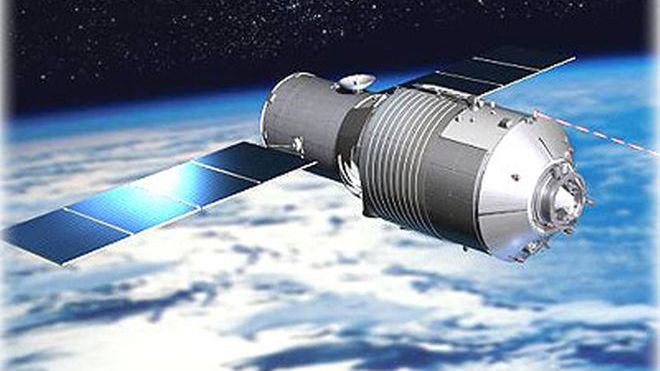
Space station "Tyangun-1". Image: China Manned Space Engineering Office
Today at night, the Tiangong-1 Chinese space station burned almost completely over the South Pacific, and the remains safely fell into the sea. The spacecraft with a length of 10.4 meters (diameter 3.4 m) received an unusually large amount of attention in the press, although the 8-ton “Tyangun-1” cannot be compared, for example, with the 120-ton Mir station, which so far holds the record as the largest artificial space object, which had previously fallen to Earth.
China warned the United Nations Office for Outer Space Affairs in advance that the Tiangong 1 would fall out of orbit between March 31 and April 4, and the fall would be virtually uncontrollable (although China refusesofficially call it “uncontrolled”). The situation was also monitored by the European Space Agency (ESA).
As a result, millions of viewers watched the current coordinates of the station in an online tracker specially open for it from Aerospace Corporation , awaiting this “uncontrolled fall”. For some, the movement of the “target” over the globe was somewhat reminiscent of the movement of a ball in a roulette wheel.
Amusing calculations were published in the media, with which probability "Tyangun-1" will fall on your city. In principle, there was indeed some chance that some debris from the station could fall in residential areas between 42.7 ° north and south latitude. For example, the southernmost regions of Russia and Kazakhstan, countries of the Caucasus, etc. fall into this zone.
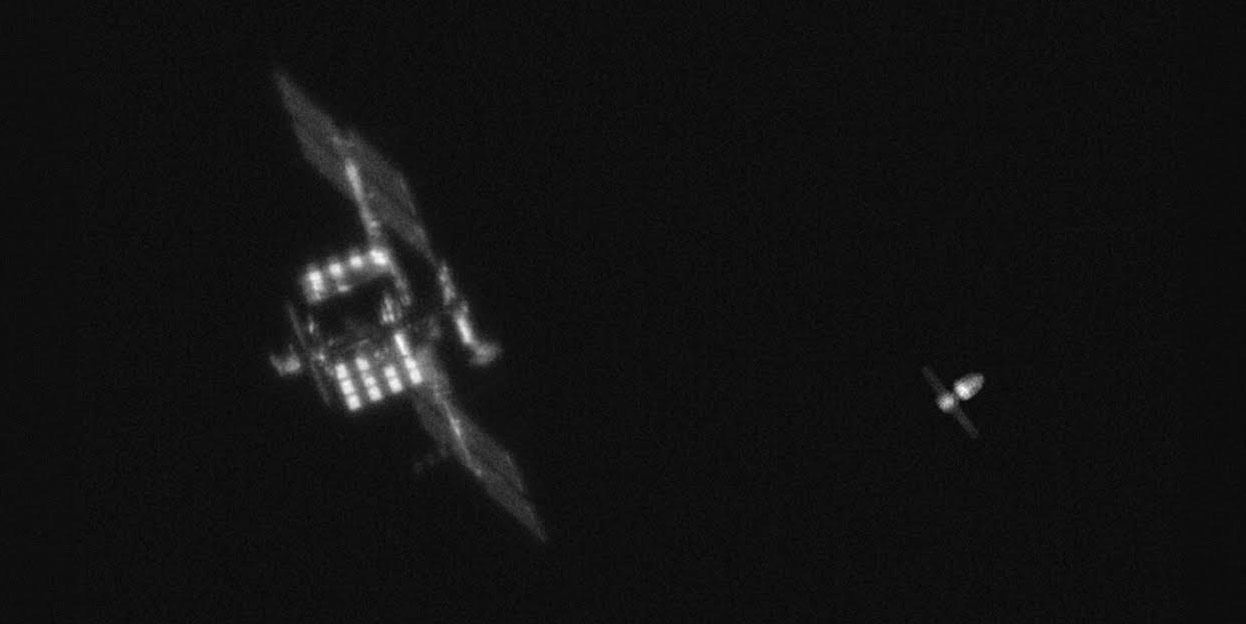
Composite photograph of the International Space Station (left) and the Chinese space station Tyangun-1 (right)
However, experts said that the station is very small and almost completely burned out in the atmosphere. So it happened.
On April 2 at 3:16 Moscow time, the Chinese orbital station entered the dense layers of the atmosphere, and most of the debris burned down during the fall. Everything else fell in the South Pacific Northwest of Tahiti.
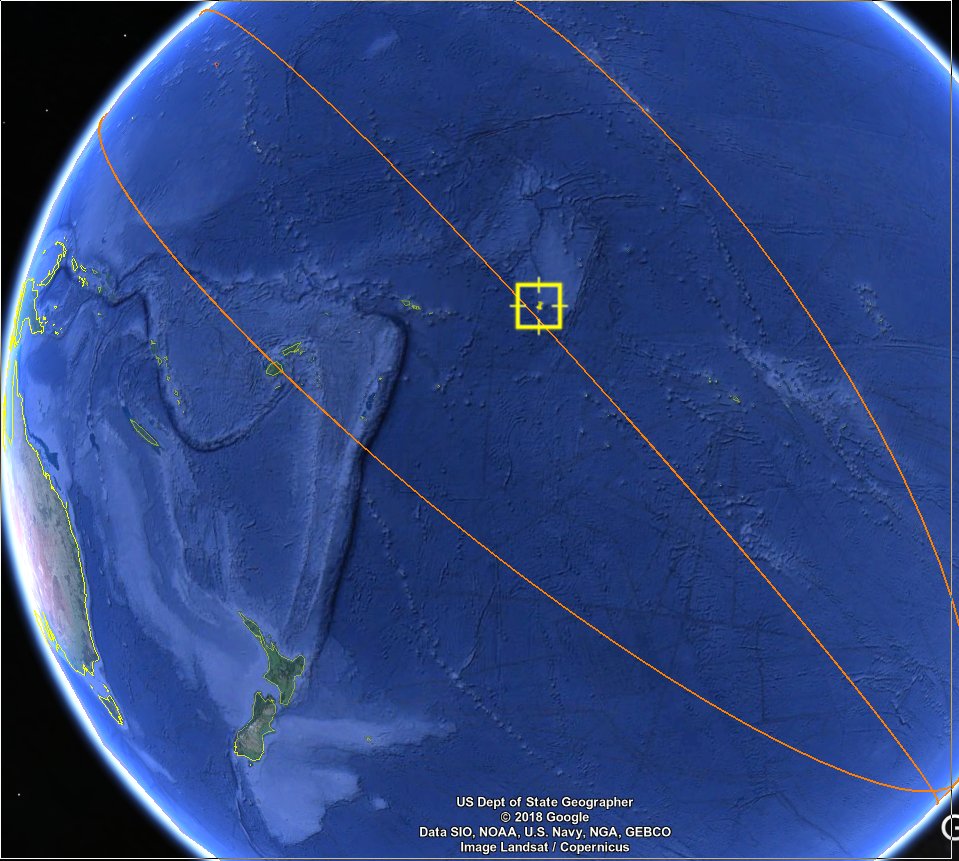
Place of the fall of "Tyangun-1" north-west of Tahiti,
China launched a prototype of the space station "Tyangun-1" September 29, 2011. The station went into orbit with a height of 350 km. In November, the station was visited by an unmanned spacecraft "Shenzhou-8" and made docking. In June 2012, the first crew of Chinese astronauts went up to the station. Three more astronauts (two men and a woman) paid a visit to the station in June 2013. Each visit lasted about two weeks.

The chairman of the PRC is talking on the phone with the crew of the Tyangun-1 station in June 2013. Photo: China Manned Space Engineering Office

The space laboratory consisted of two main modules: an experimental module, which hosted astronauts, and a resource module, where solar energy and power plants were located. With the planned service life by 2013, the station fulfilled all the scientific tasks that had been set, and from that moment simply carried out monitoring of individual regions of the Earth. However, the engineers kept in touch with her. Communications were interrupted in March 2016 due to a malfunction. Without communication, China could not turn on the station's engines to once again raise its orbit, so that further decline and fall became inevitable.
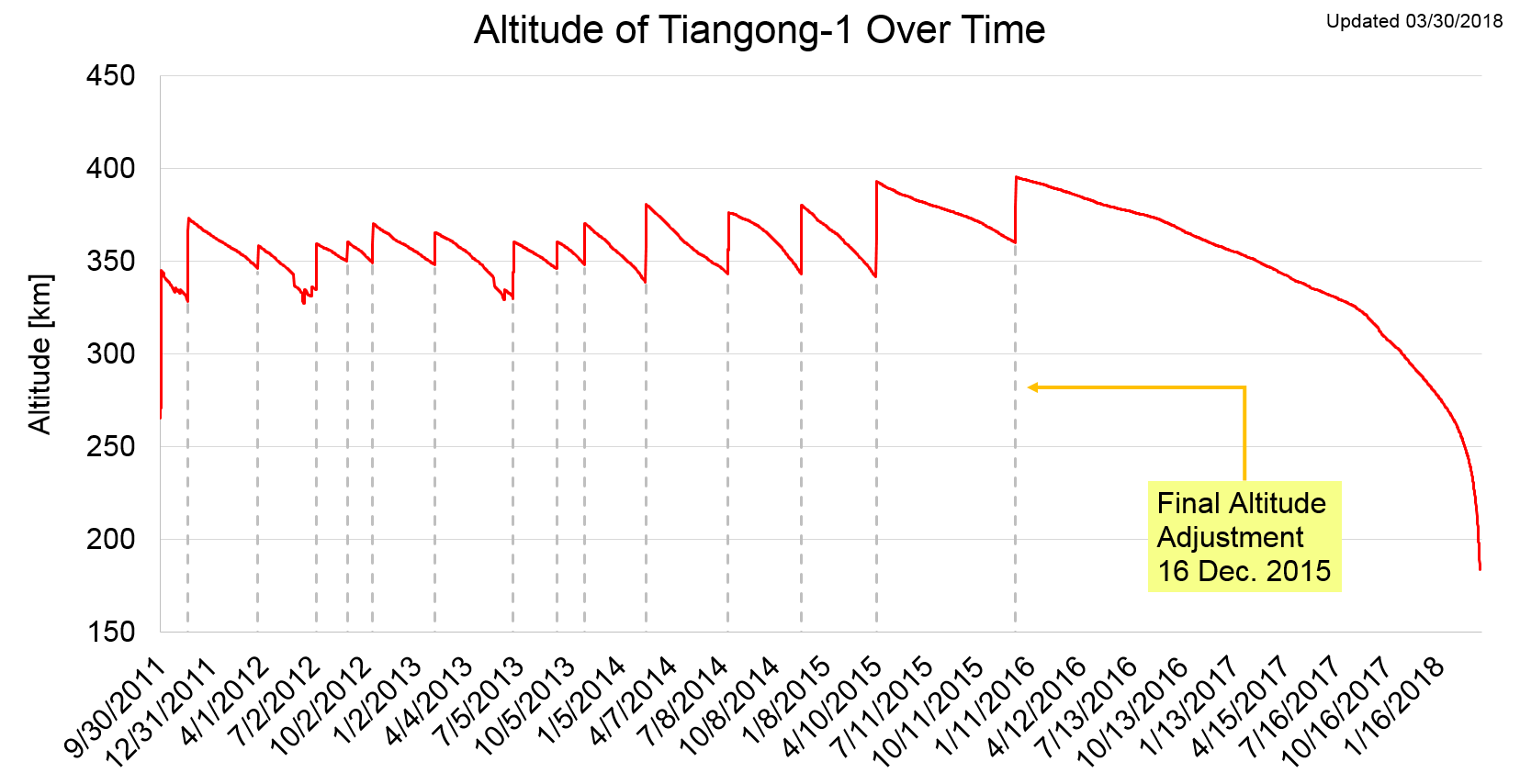
Illustration: Aerospace Corporation
Being much smaller than the ISS, nevertheless for many astronomers "Tyangun-1" became the second visible object in Earth orbit. He was repeatedly observed in telescopes by amateur astronomers and professionals. The radar data showed that the station rotates slowly, making a turn approximately every 2.5 minutes.
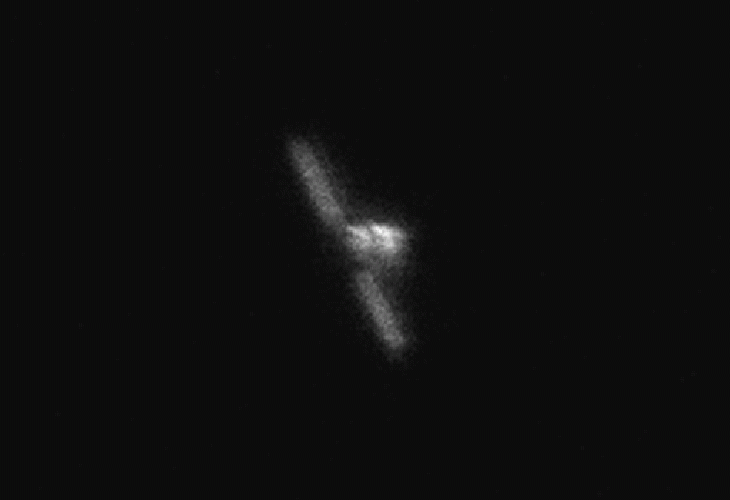
Photos "Tyangun-1", taken January 20, 2018 with an optical telescope. Photo: Philip Smith

Tyingun-1 Silhouette Against the Sun, March 28, 2018. Photo: Maximilian Teodorescu / Maximus Photography
In September 2016, China successfully launched its second space station, Tyangun-2, into orbit. The launch of the large third Tyangun-3 station was also planned, but later it was canceled in favor of the Chinese modular space station.
The first module of this large station is scheduled for conclusion in 2019. Fully assembled, excluding ships, the station will weigh about 60 tons.
